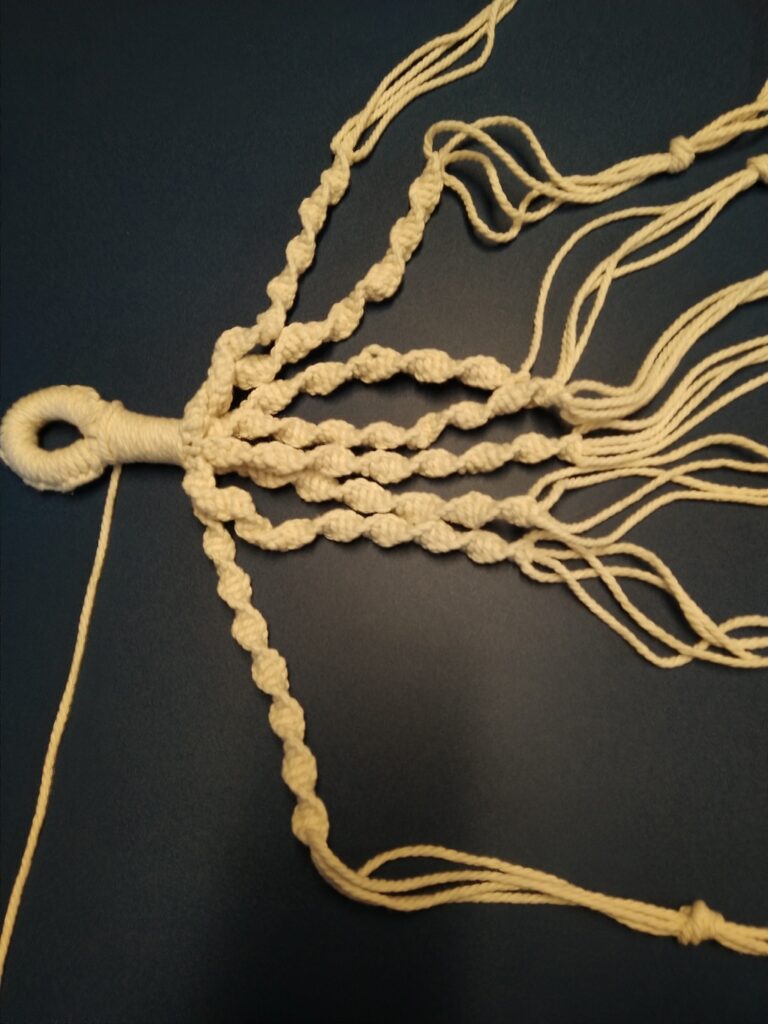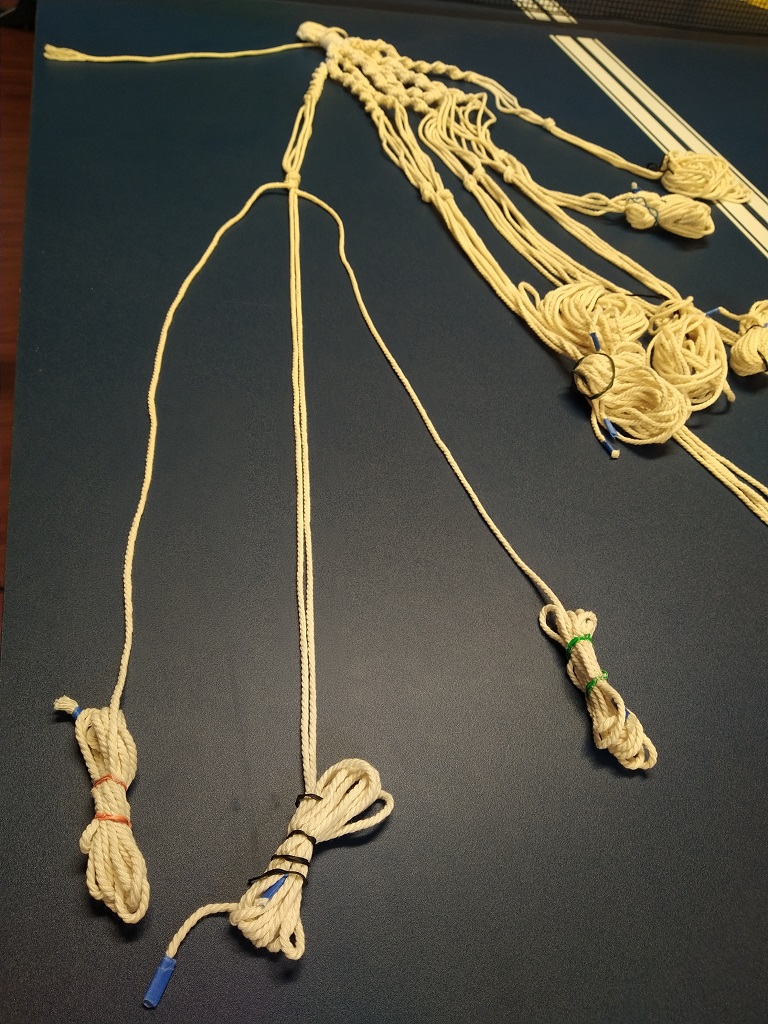The corn is getting really tall — no cobs yet, but the stalks are about as tall as they’re meant to get.
Author: Lisa
First Ripe Tomato
Cisco – Converting Access Point from Lightweight to Autonomous Firmware
I’ve seen a number of walkthroughs detailing how to convert an Aironet Wireless Access Point that’s using the lightweight firmware (the firmware which relies on something like a CAPWAP server to provide configuration so there’s not much in the way of local config options) to the autonomous firmware (one with local config & a management GUI). A few people encounter issues because downloading firmware requires a TACACS agreement — great if you’re a network engineer at a company, not great if you’ve bought a single access point somewhere.
While “google it and find someone who has posted the file … then verify the MD5 sum checks out” is an answer, a lot of the newer firmwares appear to have a major bug where any attempt to commit changes yields a 404 error. ap3g2-k9w7-tar.153-3.JF12.tar, ap3g2-k9w7-tar.153-3.JF15.tar, ap3g2-k9w7-tar.153-3.JPI4.tar — all very buggy. While it may be possible to use the CLI to “copy ru star” and write the running config into the startup config … that’s going to be difficult to explain to someone else. Something else odd — the built-in Cisco account is a ‘read only’ user — this may be normal where the GUI shows it as read only but it’s actually got management permission?
What I’ve realized, in our attempt to convert into a fully functional autonomous firmware, is that the specific version referenced in one of the walkthroughs (ap3g2-k9w7-tar.153-3.JH.tar) is a deliberate selection — it’s a security update firmware release. Which means it’s available for download for anyone with a Cisco account that’s OK for encryption download (i.e. not residing in one of those countries to which American companies are not allowed to ‘export’ good encryption stuff) even if you don’t have a TACACS account.
Luckily, the JH iteration of the firmware doesn’t have the 404 error on committing changes. The Cisco account is still showing up as read-only, but we were able to make our own read-write user & implement changes.
Double Rainbow
Macrame Project – Hanging Plant Basket
I have eight spiral knot “arms” on the plant hangar — it’s starting to look like a sea critter!
The trick that I’ve found to macrame is managing the cords as you work. It’s rather difficult to make knots with four eight foot cords. Gathering the working cords into individual bundles (and, since I am doing square knots where two cords are being wrapped around a pair of cords … I gathered two of the cords into one bundle) makes the whole process quicker and easier.
The tie around the “active” cords then matches up with the string color on my knot diagram — which is great for remembering which of the two knots you just tied!
On Federated Identity Providers
The basic idea here is that you may want someone to be able to validate your users without actually having access to your passwords or directory data. As a counter-example, a company I work with has their payroll “stuff” outsourced. Doing so required a B2B VPN that allowed the hosting company to access an internal LDAP directory. I set up an access control list for their connection so they could only authenticate users. Someone at the hosting company couldn’t download all of the e-mail addresses or phone numbers. Even so, a sufficiently motivated employee of the third-party company could get the logon and password for anyone who used their server – if it’s my code, adding the equivalent of ‘fileHandle.write(f”u:{username} p:{password}”)’ would write a log file with every cred used on the site.
Don’t contract with dodgy companies that are going to drop your user creds out to a file and do malicious stuff is a good start, but I would concede that “avoid dodgy companies” isn’t a great security paradigm. Someone came up with this “federated identity” methodology — instead of you asking the user for their ID and password, you get a URL to redirect not-yet-logged-on users over to someone trusted to handle passwords. This is the “identify provider”, or IDP.
I access your website (called the ‘service provider’, or SP), and you see I don’t have any sort of auth cookie to get me logged in. You forward my browser, along with some header info, over to IdentityProviderSite. IdentityProviderSite says to the end user “hey, what is your username and password”, checks that what is entered, maybe does the MFA “really, prove it” thing, and then redirects the browser back to the originating website. It includes some header stuff that says “Hi, I am IdentityProviderSite and I used my trusted private key to sign this message. I promise that the person associated with this connection is really Lisa. And here’s her important info (could just be username, could be first name, last name, email address, etc) that you can also trust is right.” No idea why, but the info about the person is called an “assertion” — so you’ll see talk about mapping assertions (which is basically telling my application that the thing it calls “logonID” is going to be called “userID” or “uid” or whatever in the data coming from IdentityProviderSite). Voila, I’m now on your website and logged in even though my password never transited your system. All you ever got was a promise that the person on this connection is really Lisa.
To accomplish this, there is a ‘trust’ between an application & an identity provider — if you tried to send a web user to IdentityProviderSite without establishing such a trust, it would say “yeah, I’m not validating users for you — I have no idea who you are”. And, similarly, a web app isn’t going to just trust any random source to say “really, I promise this is Lisa”. So we go into the web application and say “I really, really want to trust IdentityProviderSite when it tells me a user’s ID” and then go into IdentityProviderSite and say “I want WebApp to be able to ask to validate users”. And there’s some crypto stuff because IdentityProviderSite signs it’s “I promise this is Lisa” message & we don’t want someone to be able to edit that to say “I promise this is Fred”.
Why, oh why, is “where to send the authenticated person back to continue on their merry way” called an Assertion Consumer Service? The “service provider” is supposed to “consume” the identity … so it’s the URL of the “assertion consumer” (i.e. the code in the application that has some clue what to do with the “I promise this is Lisa” blob of data that they call an assertion).
Does this make any sense for third-party companies that we really shouldn’t trust? Companies that aren’t located on our internal network to access our directories directly? Absolutely! Does this make any sense for our internal stuff? Stuff with direct, encrypted access to the AD directory? Eh … it goes well with the “trust no one” security principal. And points for consistency — every app’s logon will look the same. But it’s a lot of overhead / Internet traffic / complexity, too.
The basic process flow when a user attempts to use a site is:
- A client attempts to access some web resource to which they are not already authenticated
- The end web application redirects the client to the Identity Provider.
- The Identity Provider authenticates the user.
- The Identity Provider redirects the client to the Assertion Consumer Service (ACS) on the web resource by sending a SAML response over HTTP POST.
- The web server processes the SAML response.
- The client is redirected to the actual web application URL
- The web server authorizes the user to access the requested web resource.
- The application server sends the HTTP response back to client.
Why doesn’t everyone do this — non-working hours clarification
I like that Microsoft has added “they are x hours behind you” to individual profiles, but that assumes people all work 8-5 in their local time. Which isn’t the case, so I’ve been introducing myself to new people that I need to engage in meetings including something like “I work in the Eastern time zone but am generally available until about 6PM Eastern if that’s better for you” & asking for a similar response from them. I know some people who live in the Central, Mountain, or Pacific time zones but work 8-5 Eastern. I know others who live in the same area work 9-6 or 11-8 Eastern. We have overseas contractors who work from 3:30 AM to 12:30 PM Eastern, and others who who start working around 10 AM.
Seems like it would make collaborating with others easier if we all had recurring appointments to clarify our non-working hours. A recurring each-weekday appointment like below — away so it doesn’t look like I’m just booked solid at dark-o-clock, recurring, and no reminder (because that would get super annoying). And maybe a recurring weekly one from whatever PM on Friday through whatever AM on Monday if there are a statistically significant of people who’d be working T-Sat or Sun-Thur.

Doesn’t really provide much value implemented in a small group – you generally get a good idea of when your immediate coworkers are working. But it would help a lot reaching out to other groups!
A Cali-Kitty
Super Soft Rolls
Ingredients:
- 4 cups of all-purpose flour
- 1 1/2 cups warm water
- 2 Tbsp sugar
- 1 Tbsp yeast
- 1 tsp salt
- 1/4 cup butter
Mix yeast and sugar into warm water and allow to set until it is frothy.
In a stand mixer, mix flour and salt. Slowly add in yeasty water & mix. Kneed with a bread hook and slowly add in about 1 tsp pieces of butter at a time until it has all been incorporated. Continue to kneed until the dough is smooth and shiny.
Allow to rise until it has doubled in size. Form and allow to rise again. Then bake.
To make sausage rolls, bake at 375 F for about 18 minutes.
Useful DNF Commands
Beyond basic stuff like “dnf install somepackage” or downloading an rpm and using “dnf install my.package.rpm”, this is a running list of useful dnf commands.
List installed packages (similar to rpm -qa):
dnf list installed
List packages with updates available:
dnf check-update
Update everything but the kernel:
dnf update -x kernel*
Find package that provides something:
[lisa@rhel1 ~/]# dnf whatprovides cdrskin Last metadata expiration check: 2:35:57 ago on Fri 12 Aug 2022 11:37:43 AM EDT. cdrskin-1.5.2-2.fc32.x86_64 : Limited cdrecord compatibility wrapper to ease migration to libburn Repo : fedora Matched from: Provide : cdrskin = 1.5.2-2.fc32 cdrskin-1.5.4-2.fc32.x86_64 : Limited cdrecord compatibility wrapper to ease migration to libburn Repo : updates Matched from: Provide : cdrskin = 1.5.4-2.fc32
Package info, including version
[lisa@rhel1 ~/]# dnf info sendmail Last metadata expiration check: 2:37:19 ago on Fri 12 Aug 2022 11:37:43 AM EDT. Available Packages Name : sendmail Version : 8.15.2 Release : 43.fc32 Architecture : x86_64 Size : 730 k Source : sendmail-8.15.2-43.fc32.src.rpm Repository : fedora Summary : A widely used Mail Transport Agent (MTA) URL : http://www.sendmail.org/ License : Sendmail Description : The Sendmail program is a very widely used Mail Transport Agent (MTA). : MTAs send mail from one machine to another. Sendmail is not a client : program, which you use to read your email. Sendmail is a : behind-the-scenes program which actually moves your email over : networks or the Internet to where you want it to go. : : If you ever need to reconfigure Sendmail, you will also need to have : the sendmail-cf package installed. If you need documentation on : Sendmail, you can install the sendmail-doc package.
Show history:
[lisa@rhel1 ~/]# dnf history
ID | Command line | Date and time | Action(s) | Altered
------------------------------------------------------------------------------------------------------------------------------------------------------------------------
102 | remove liberation-fonts | 2021-11-28 18:44 | Removed | 3
101 | remove chromedriver | 2021-11-28 18:44 | Removed | 2
100 | remove google-chrome-stable | 2021-11-28 18:44 | Removed | 1 < 99 | install liberation-fonts | 2021-11-28 18:42 | Install | 1 >
98 | install chromedriver | 2021-11-28 18:38 | Install | 2
97 | remove mediainfo | 2021-11-16 13:31 | Removed | 4
96 | install mediainfo | 2021-11-16 13:29 | Install | 4
Which brings up an interesting command — you can undo a history step instead of trying to uninstall the list of things you just installed.
dnf history undo 98 -y






